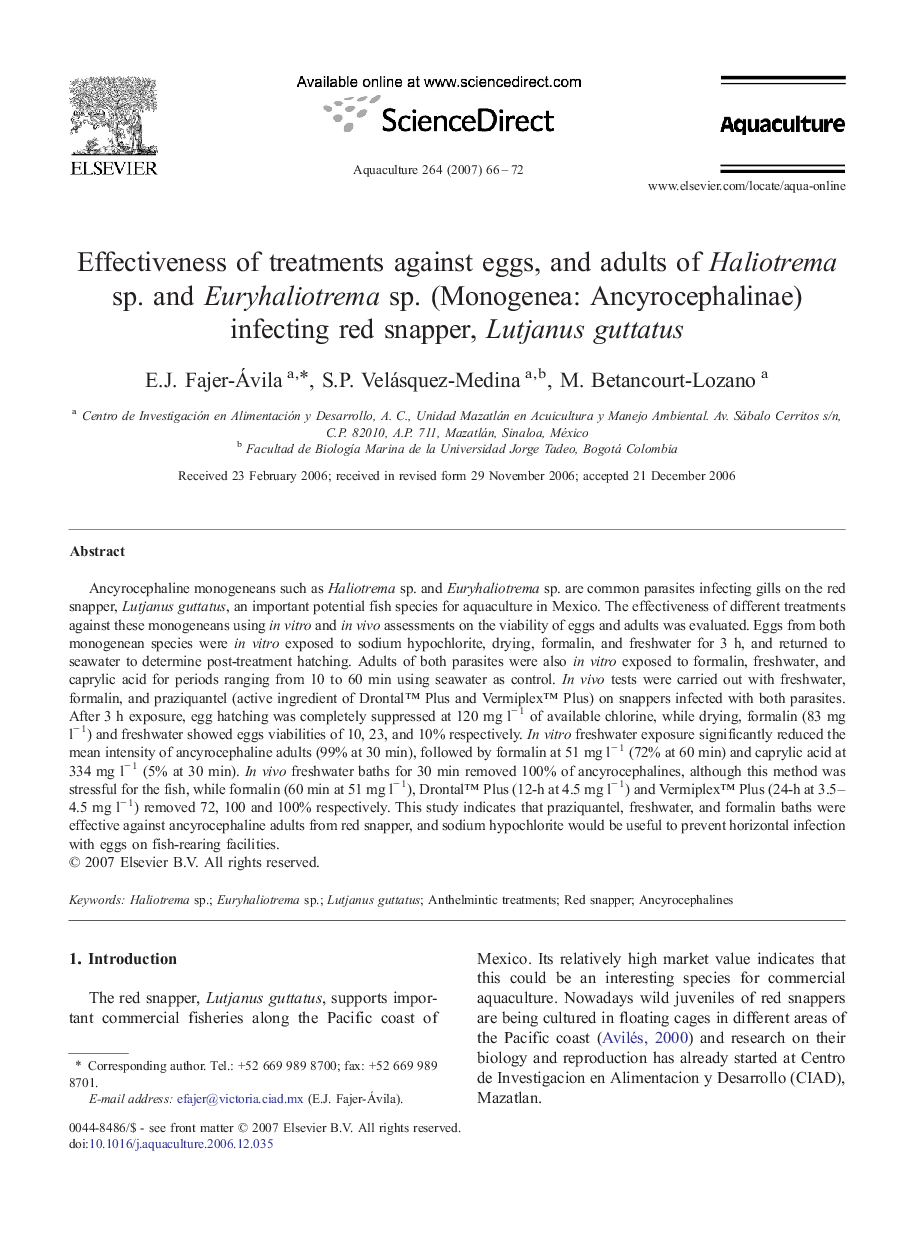| Article ID | Journal | Published Year | Pages | File Type |
|---|---|---|---|---|
| 2425364 | Aquaculture | 2007 | 7 Pages |
Ancyrocephaline monogeneans such as Haliotrema sp. and Euryhaliotrema sp. are common parasites infecting gills on the red snapper, Lutjanus guttatus, an important potential fish species for aquaculture in Mexico. The effectiveness of different treatments against these monogeneans using in vitro and in vivo assessments on the viability of eggs and adults was evaluated. Eggs from both monogenean species were in vitro exposed to sodium hypochlorite, drying, formalin, and freshwater for 3 h, and returned to seawater to determine post-treatment hatching. Adults of both parasites were also in vitro exposed to formalin, freshwater, and caprylic acid for periods ranging from 10 to 60 min using seawater as control. In vivo tests were carried out with freshwater, formalin, and praziquantel (active ingredient of Drontal™ Plus and Vermiplex™ Plus) on snappers infected with both parasites. After 3 h exposure, egg hatching was completely suppressed at 120 mg l− 1 of available chlorine, while drying, formalin (83 mg l− 1) and freshwater showed eggs viabilities of 10, 23, and 10% respectively. In vitro freshwater exposure significantly reduced the mean intensity of ancyrocephaline adults (99% at 30 min), followed by formalin at 51 mg l− 1 (72% at 60 min) and caprylic acid at 334 mg l− 1 (5% at 30 min). In vivo freshwater baths for 30 min removed 100% of ancyrocephalines, although this method was stressful for the fish, while formalin (60 min at 51 mg l− 1), Drontal™ Plus (12-h at 4.5 mg l− 1) and Vermiplex™ Plus (24-h at 3.5–4.5 mg l− 1) removed 72, 100 and 100% respectively. This study indicates that praziquantel, freshwater, and formalin baths were effective against ancyrocephaline adults from red snapper, and sodium hypochlorite would be useful to prevent horizontal infection with eggs on fish-rearing facilities.
